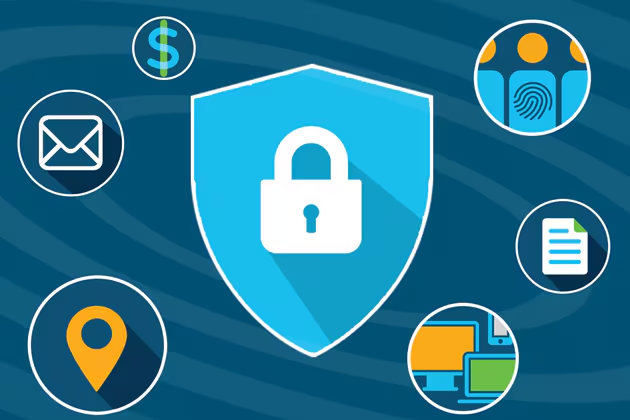Enhancing Security on Trwho.com: Best Practices and Strategies
In an increasingly digital world, the importance of online security cannot be overstated. Websites like Trwho.com, which serve as hubs for user interaction, content sharing, or e-commerce, must prioritize security to protect their users and maintain their reputation. This article explores the essential measures and strategies for enhancing the security of Trwho.com, ensuring that it remains a safe and trusted platform.
Understanding the Importance of Website Security
Security is the backbone of any successful online platform. For Trwho.com, a secure environment not only protects sensitive user data but also fosters trust among its users. A single security breach can result in financial loss, legal implications, and irreparable damage to the platform’s reputation. Therefore, understanding and implementing robust security measures is crucial.
Common Security Threats to Websites
Before diving into the strategies for enhancing security, it’s essential to understand the common threats that websites face. These include:
- Phishing Attacks: Cybercriminals often create fake versions of legitimate websites to steal user credentials.
- Malware Injections: Malicious code can be injected into a website to exploit vulnerabilities, steal data, or compromise functionality.
- Distributed Denial of Service (DDoS) Attacks: These attacks overwhelm a website with traffic, rendering it inaccessible to users.
- Cross-Site Scripting (XSS): Attackers exploit vulnerabilities to inject malicious scripts into web pages viewed by other users.
- SQL Injection: This attack involves injecting malicious SQL queries into input fields to gain unauthorized access to the database.
- Man-in-the-Middle (MitM) Attacks: These occur when attackers intercept communication between the user and the website.
Essential Security Measures for Trwho.com
To safeguard against these threats, Trwho.com can adopt the following security measures:
1. Implement HTTPS and SSL/TLS Encryption
Switching to HTTPS and securing the website with an SSL/TLS certificate is fundamental. This encryption ensures that data transmitted between the user and the website remains private and protected from interception.
2. Regular Software Updates
Keeping all software, plugins, and frameworks up-to-date is critical. Cybercriminals often exploit known vulnerabilities in outdated software, so regular updates help close these security gaps.
3. Web Application Firewall (WAF)
Deploying a Web Application Firewall can help filter and monitor incoming traffic, blocking malicious requests and preventing common attacks like SQL injection and XSS.
4. Two-Factor Authentication (2FA)
Requiring users to enable two-factor authentication adds an extra layer of security. Even if a user’s password is compromised, the second authentication factor can prevent unauthorized access.
5. Strong Password Policies
Encouraging users to create strong, unique passwords and implementing measures like password expiration and complexity requirements can significantly enhance account security.
6. Regular Security Audits
Conducting periodic security audits helps identify vulnerabilities before attackers can exploit them. This includes reviewing code, server configurations, and user permissions.
7. Secure Data Storage
Encrypting sensitive user data stored on servers is essential to prevent unauthorized access. Using hashing algorithms for passwords ensures that even if data is breached, it remains unreadable.
Advanced Security Strategies
For a website like Trwho.com, basic measures might not suffice given the evolving nature of cyber threats. Advanced strategies include:
1. Content Delivery Network (CDN)
A CDN not only enhances website performance but also provides protection against DDoS attacks by distributing traffic across multiple servers.
2. Behavioral Analytics
Using AI and machine learning to analyze user behavior can help detect and respond to anomalies that might indicate security threats.
3. Bug Bounty Programs
Offering rewards to ethical hackers for identifying and reporting vulnerabilities can uncover potential issues before malicious actors exploit them.
4. Zero Trust Architecture
Adopting a Zero Trust model ensures that no user or device is trusted by default, even if they are inside the network. This involves continuous verification of identities and access controls.
5. Security Incident Response Plan
Having a well-documented plan for responding to security incidents ensures that breaches are handled efficiently and with minimal impact.
User Education and Awareness
Even with robust security measures, user awareness plays a pivotal role in maintaining a secure platform. Trwho.com can take the following steps to educate its users:
- Phishing Awareness Campaigns: Regularly inform users about the dangers of phishing and how to recognize suspicious emails or links.
- Security Best Practices: Provide guidelines on creating strong passwords, enabling 2FA, and recognizing potential threats.
- Reporting Mechanisms: Encourage users to report suspicious activity or security concerns immediately.
Monitoring and Continuous Improvement
Website security is not a one-time task; it requires ongoing effort. Monitoring tools can provide real-time insights into potential threats, while continuous improvement ensures that the platform evolves to counter emerging risks. Regular penetration testing and vulnerability assessments should be integral to Trwho.com’s security strategy.
Conclusion
As cyber threats continue to grow in sophistication, ensuring the security of platforms like Trwho.com is more critical than ever. By implementing robust security measures, adopting advanced strategies, and fostering user awareness, Trwho.com can build a resilient defense against cyberattacks. A secure platform not only protects users but also enhances trust and loyalty, paving the way for sustained success in the digital landscape.














Post Comment